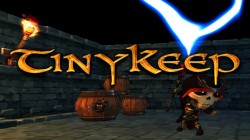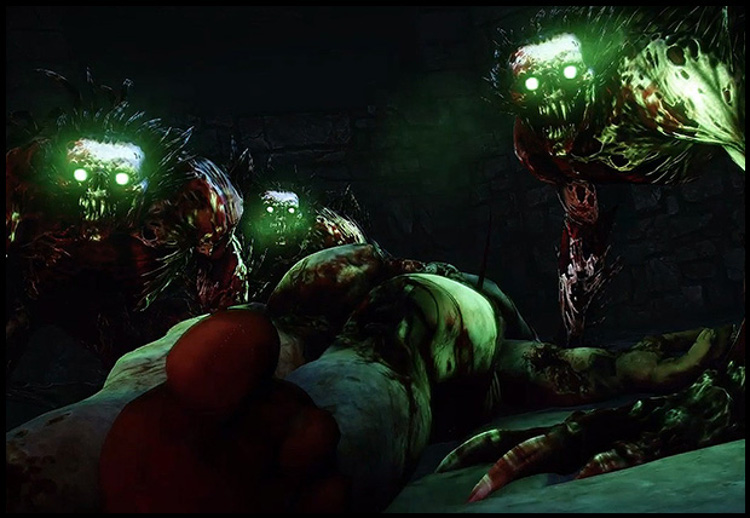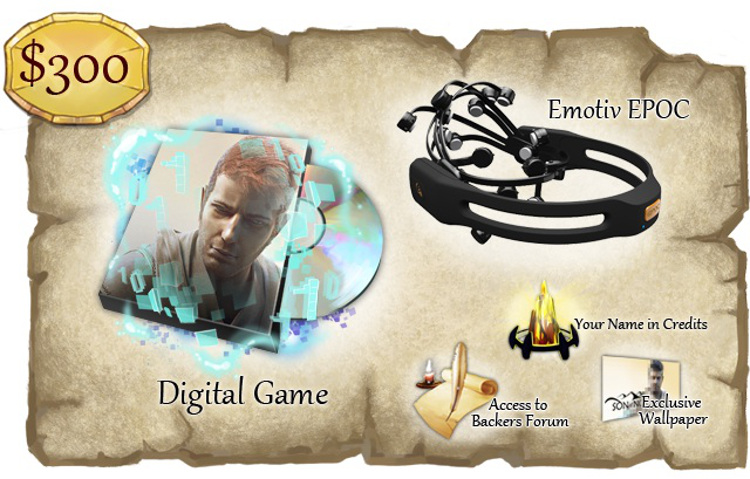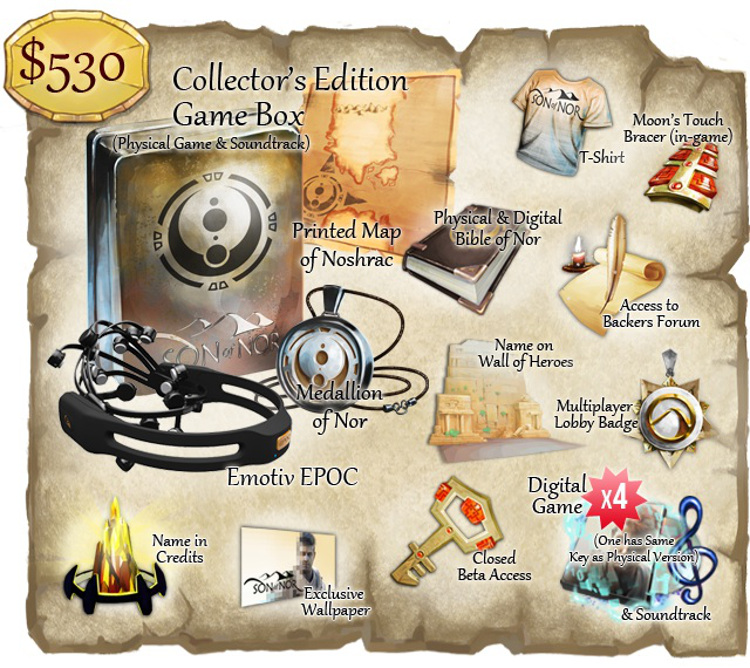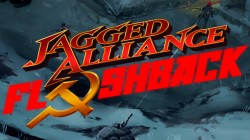
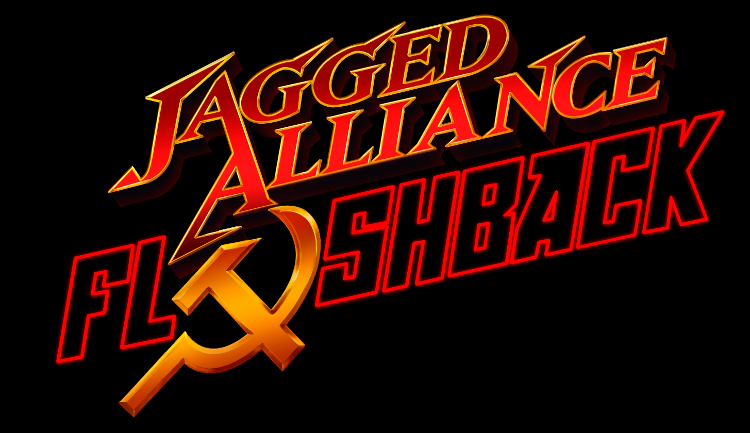
Full Control is in a precarious position with the “reset” of the Jagged Alliance series, but who better to reel the series back to it’s TBS roots? Thomas Lund leads the team at Full Control once more unto the breach with the studios most ambitious project to date. The Danish developer is no stranger to the TBS genre. In fact, the bulk of their portfolio rests in roguelike territory. Thomas was kind enough to grant us clearance to gather more information about Jagged Alliance: Flashback.
Dylan: Tell us a bit about Full Control as a studio. We know that, as a team, you’ve created many TBS games including Frontline Tactics, Tactical Soldier - Undead Rising, and Space Hulk. How did those past experiences prepare you for taking on the task that is JAF?
We have tried hard with all our TBS games to test and try different aspects on turn-based gaming. We are not set on a single formula of how mechanics work, and I think thats a strength we can carry into a bigger title like JAF. For one we practically have a lot of code for different mechanics already in place, and at the same time we can bring fresh eyes to JAF that are not set in stone. And even with that experience, we decided to go for “JA2 with a new story”. It simply felt like the only real path to go for the game - especially with Back in Action having tried to fiddle with “the core”.
Dylan: One of the things about Full Control that I relate to in a very personal way is your mission statement - “Our mission is to deliver new strategy games for the ‘soccer dad’ group.” After all, we game responsibly around here. What do you think needs to be done differently when targeting this specific niche of the market?
 I think that the essence of our mission statement is “turn based”. No matter how small or how big, how easy or how hard - turn based is simply the perfect foundation for “soccer dads” of all ages. You can play the amount of time you have - and stop at a moments notice when real life calls upon you. And then continue your game later without having missed a heartbeat in your game experience.
I think that the essence of our mission statement is “turn based”. No matter how small or how big, how easy or how hard - turn based is simply the perfect foundation for “soccer dads” of all ages. You can play the amount of time you have - and stop at a moments notice when real life calls upon you. And then continue your game later without having missed a heartbeat in your game experience.
Try that with endless runners or first person shooters - just not possible.
Dylan: Javier O’ Neill credits Spec Ops: The Line as one of his many previous projects. Will he aim to inject some of the gritty realism that is making Spec Ops a cult favorite among mature gamers?
Javier’s broad experience sets the theme not only for his art but the entire art department. Just take a look at the fantastic environment for Space Hulk that the team has made under his leadership. This will naturally carry over into JAF!
Dylan: Your concept artist, Jesper worked with Crytek on the first two installments of the Crysis series. How will his experience creating concepts for futuristic military technology factor into Jagged Alliance: Flashback?
Jesper is super talented and a great artist in general. Having been able to draw concepts on AAA level for many years gives us a huge quality lift on the concept production for JAF and a lot of great ideas on the art side.

Dylan: I’d assume your feeling a bit like Christoper Nolan or Zack Snyder when approaching Jagged Alliance. It’s a tall task to take a known IP, modernize it and add real value to the reset. A successful outing requires additions and subtractions to the original formula. In what area of the game play are you treading carefully to ensure Jagged Alliance retains it’s identity?
Yeah - we have approached this IP as one of the holy grails, and that means we want to change as little as possible. Especially the combat system and tactical layer is what most fans love, and we have a “if its not broken, don’t fix it” approach to that part. To help us on this part, we have gotten Chris Camfield onto the team as advisor - to point us to places in JA2 that he felt broken or in need of fixes when he coded them.
For me personally JA has always been about the story and the mercs in addition to the tactical part. So we need cheesy humor, mercs with personality and through them an emergent behaviour of your squads as if they are actual characters. Perverted characters, but they have a life 
The place where we think we can bring something to the table in terms of additions is really on the strategic layer. More options, different factions, hints of politics, base building/fortification
Dylan: The team has an obvious passion for tactical TBS. What game from your childhood molded your love for the genre?
Jagged Alliance has been one of the 3 games I really admired and played a lot in the “old days”. XCom and Fallout being the others, as well as all the AD&D games by SSI. Warhammer 40k Chaos Gate as well. All games in the same genre with different aspects to bring to the table.
So being able to start creating games that pick up on these classics is just fantastic! I would not want to do any other job than this right now.
Dylan: In your opinion, what makes the TBS genre so appealing? Why do you think it’s making a mainstream comeback in the past few years? (example Xcom: Enemy Unknown)
TBS has always had lots of things going for it. You are first and foremost able to think before pressing buttons. Action games definitely are fun to play, but they dont really tell a story the way a good TBS RPG can do it.
At the same time they were ugly beasts mostly marred with horrible UI and 500 page manuals to read. And even then people have been playing them all the time, because they simply emerge you into the games on a different level.
The recent year has changed a lot - with XCOM:EU really only opening the eyes for a broader public (as well as publishers) that people have really wanted to play these games. But no one was making them anymore except few hardcore studios.
I really think Firaxis did a fantastic job on XCOM:EU. They didnt just copy the old game, but destilled it down to the essense for a more broad audience. They put TBS on the radar for regular gamers and showed them that these games can be pretty, have action and user interfaces that are not just ugly grey buttons.
We didnt go down that route with JAF for many reasons, but that doesnt mean that I could not see us or someone else do a similar game in the Jagged Alliance universe. But thats not JAF. Here we go with a Kickstarter to cater to the old school fans.
The last things I think has an influence is a combination of tablets being perfect for TBS as well and the entire digital distribution boom. This has lead to the resurgence of more niche audience titles and grown the awareness of old popular genres.

Dylan: Full Control is fully supporting the PC modding community with JAF. Why is it so important in today’s PC gaming climate to offer mod kits to the community?
We think that modding extends the lifetime of a PC game way beyond the original intends. It has several positive effects - fan communities as well as additional sales on the tail. So win win.
Dylan: JAF will focus on taking and holding strategic points, squad and base building mechanics as well as stealth. With that in mind, are there going to be any dedicated stealth missions? Maybe collecting information to make an area easier to capture?
We definitely want to have more stealth being a big part of the game. If that means dedicated stealth missions or not has not been decided yet. But collecting information via different means definitely is one of the things we are looking at. And some of that could definitely be tied into missions where its a matter of sneaking in more than “just” killing all enemies in a sector.
Dylan: Considering JAF will take place during the cold war, will there be a heavy focus on espionage?
Not as its planned now. The setting was chosen primarily to tell the prequel story with AIM being founded in 1991, and the 80′ies and the cold war is simply so rich in cool stories that it made the choice easy.

Q: In your opinion, what impact has crowdfunding had on the gaming industry?
It has given gamers a way to “vote” on what type of games they really want - not what publishers read into marketing data.
It has given developers a chance to get money for alternative ideas on different levels - from the one-man army home in his moms basement to larger independent studios to make their dream games.
At the same time its important to say, that its not “the” answer to all problems. The amount of pledgers is extremely low compared to gamers who buy games. And there is still room for other ways to finance games that dont fit into the Kickstarter mold.

Dylan: What feature are you most excited about adding to JAF?
Compared to recent games in the Jagged Alliance IP, we are super excited to get turn-based combat back again as well as mercenary personalities.
I you look at it more broad, then the ability to add a new chapter to the Jagged Alliance story universe. In our opinion JA is as much an RPG as a TBS, and to what you need both a great story AND great tactical combat.
Dylan: The goal with JAF is to “reset” the series. Explain the inherent difference between a reboot and a reset.
The recent reboot used in Back in Action tried to take the Jagged Alliance name and put it into a direction where someone thought that it would reach a bigger audience - removing in the process a lot of the soul and the DNA of what Jagged Alliance was about.
Our reset will take the game back to the roots again - removing this “reboot” from the equation. We dont want to rework mechanics that fans love. But we want to tell a new story while staying true to Jagged Alliance. At the same time we can modernise the game into a 3D engine, and hopefully gives modders a new base to build future games upon.
It’s obvious that Thomas and Full Control are well aware of the weight pressing upon their shoulders. Long time fans of the Jagged Alliance series will have lofty expectations in regards to Flashback. The Danish development teams’ past Turn Based Strategy experience and true respect of the Jagged Alliance franchise should inspire confidence in potential backers of JAF. Be sure to check out Full Control’s latest project updates and help make this reset a reality. Make sure to visit their Kickstarter page for more information.
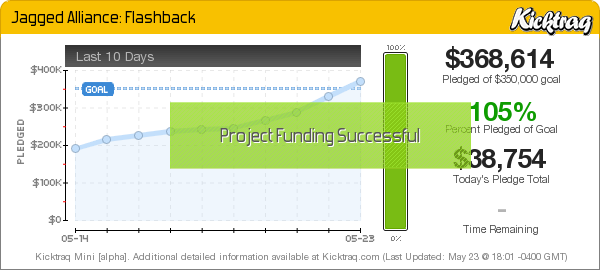
















 I think that the essence of our mission statement is “turn based”. No matter how small or how big, how easy or how hard - turn based is simply the perfect foundation for “soccer dads” of all ages. You can play the amount of time you have - and stop at a moments notice when real life calls upon you. And then continue your game later without having missed a heartbeat in your game experience.
I think that the essence of our mission statement is “turn based”. No matter how small or how big, how easy or how hard - turn based is simply the perfect foundation for “soccer dads” of all ages. You can play the amount of time you have - and stop at a moments notice when real life calls upon you. And then continue your game later without having missed a heartbeat in your game experience.


